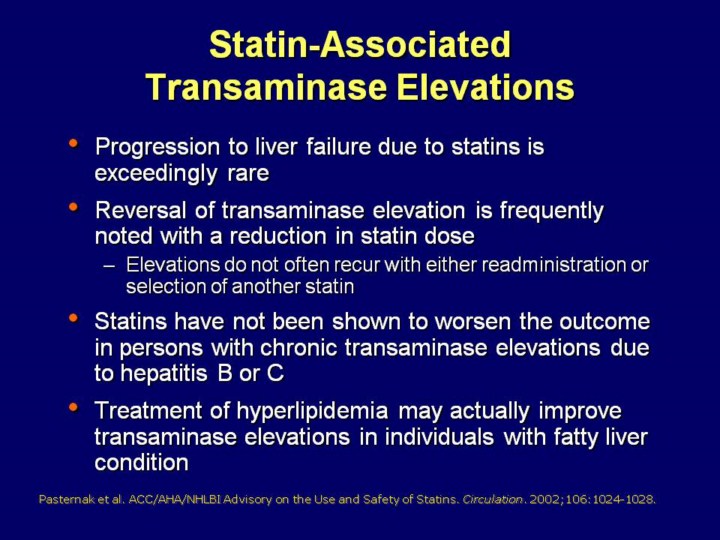| front |1 |2 |3 |4 |5 |6 |7 |8 |9 |10 |11 |12 |13 |14 |15 |16 |17 |18 |19 |20 |21 |22 |23 |24 |25 |26 |27 |28 |29 |30 |31 |32 |33 |34 |35 |36 |37 |38 |39 |40 |41 |42 |43 |44 |45 |46 |47 |48 |49 |50 |51 |review |
 |
Key Point: The incidence of true hepatotoxicity is exceedingly rare across
the Asymptomatic elevations in transaminases are observed in a small percentage of patients.1 Whether transaminase elevation with statin therapy constitutes true hepatotoxicity is unknown; however, progression to liver failure due to statins is exceedingly rare, if it ever occurs1 Reversal of transaminase elevation frequently occurs when the statin dose is reduced. These elevations often do not recur with readministration or when another statin is administered1,2 Moreover, statins have not been shown to worsen the outcome of patients with hepatitis B or C, and treatment of hyperlipidemia may actually improve transaminase elevations in patients with fatty liver condition1
1.
Pasternak RC, Smith SC Jr, Bairey-Merz CN, et al. ACC/AHA/NHLBI clinical
advisory on the use
and safety of statins. Circulation. 2002;106:1024-1028.
2.
Hunninghake DB. Drug treatment of dyslipoproteinemia.
Endocrinol Metab Clin North Am.
1990;19:345-360.
|